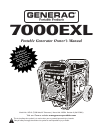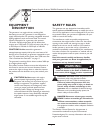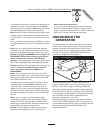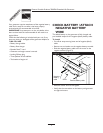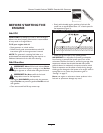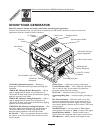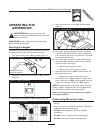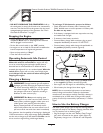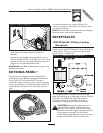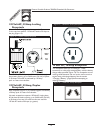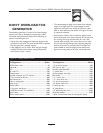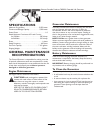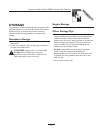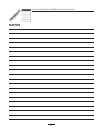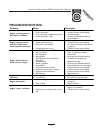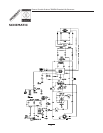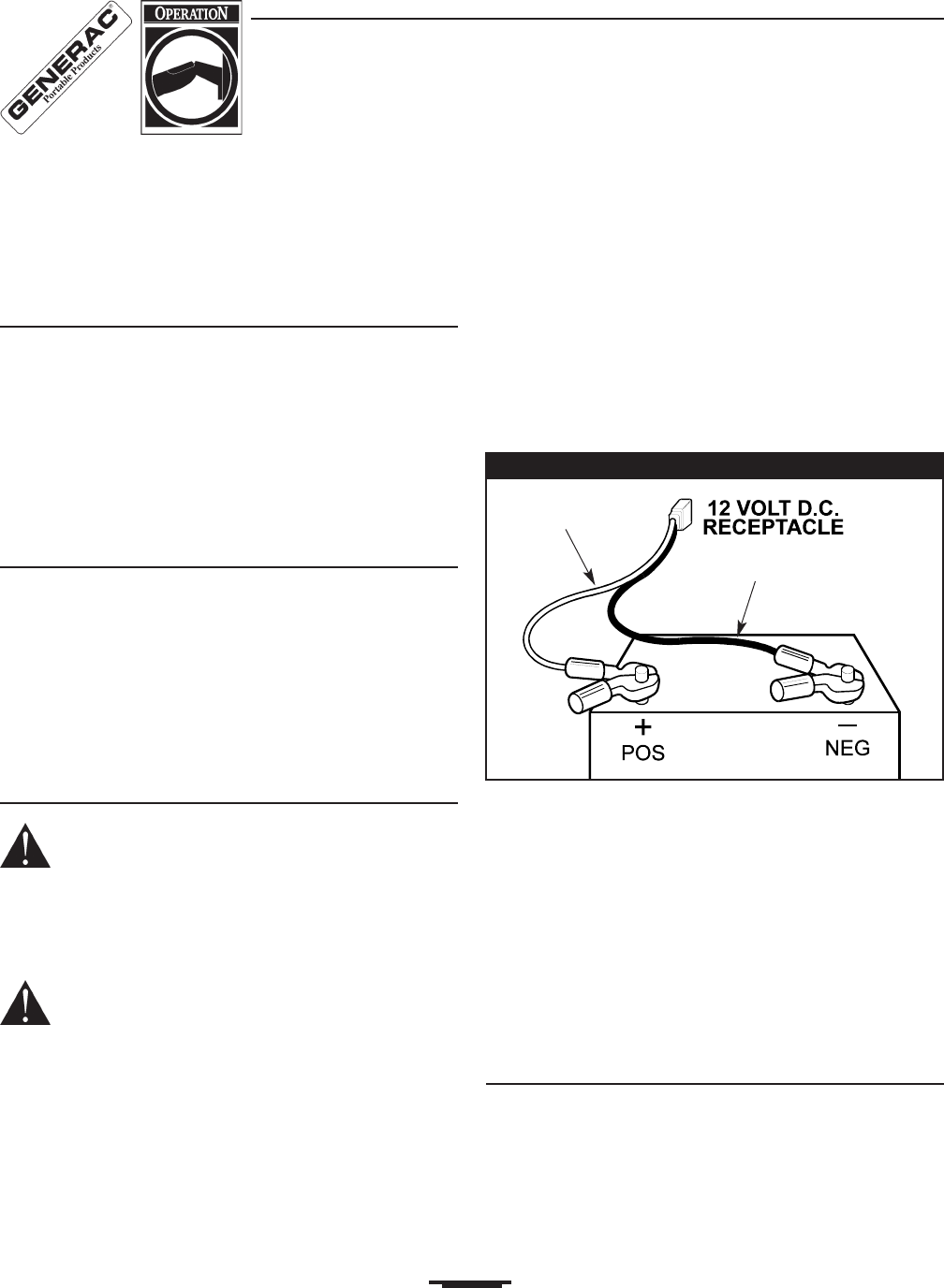
Generac Portable Products 7000EXL Extended Life Generator
8
• DO NOT OVERLOAD THE GENERATOR. Add up
the rated watts (or amps) of all loads to be connected at
one time.This total should not be greater than the rated
wattage/amperage capacity of the generator. See “Don’t
Overload the Generator” on page 11.
Stopping the Engine
• Unplug all electrical loads from generator panel
receptacles. Never start or stop engine with electrical
devices plugged in and turned on.
• Put the idle control switch in the “Off” position.
• Let engine run at no–load for 30 seconds to stabilize the
internal temperatures of engine and generator.
• Move run/stop switch to “Stop.”
• Close the fuel shut–off valve.
Operating Automatic Idle Control
This switch is designed to greatly improve fuel economy.
When this switch is turned ON, the engine will only
run at its normal high governed engine speed when an
electrical load is connected.When an electrical load is
removed, the engine will run at a reduced speed. With the
switch off, the engine will run at the normal high engine
speed. Always have the switch off when starting and
stopping the engine.
Charging a Battery
WARNING! Storage batteries give off explosive
hydrogen gas while recharging.An explosive mixture
will remain around the battery for a long time after
it has been charged.The slightest spark can ignite
the hydrogen and cause an explosion, resulting in
blindness or other serious injury.
WARNING!
Do Not permit smoking, open
flame, sparks or any other source of heat around a
battery.Wear protective goggles, rubber apron and
rubber gloves when working around a battery.
Battery electrolyte fluid is an extremely caustic
sulfuric acid solution that can cause severe burns. If
spill occurs flush area with clear water immediately.
Your generator has the capability of recharging a discharged
12 Volt automotive or utility style storage battery. Do Not
use the unit to charge any 6 Volt batteries. Do Not use the
unit to crank an engine having a discharged battery.
To recharge 12 Volt batteries, proceed as follows:
• Check fluid level in all battery cells. If necessary, add
ONLY distilled water to cover separators in battery cells.
Do Not use tap water.
• If the battery is equipped with vent caps, make sure they
are installed and are tight.
• If necessary, clean battery terminals.
• Connect battery charge cable connector plug to panel
receptacle identified by the words “12 VOLTS D.C.”
• Connect battery charge cable clamp with red handle to
the positive (+) battery terminal (Figure 8).
• Connect battery charge cable clamp with black handle
to the negative (–) battery terminal (Figure 8).
• Start engine. Let the engine run while battery recharges.
• When battery has charged, shut down engine
NOTE: Use an automotive hydrometer to test battery
state of charge and condition. Follow the hydrometer
manufacturer’s instructions carefully. Generally, a battery is
considered to be at 100% state of charge when specific
gravity of its fluid (as measured by hydrometer) is 1.260 or
higher.
How to Use the Battery Charger
Use battery float charger jack to keep the starting battery
charged and ready for use. Battery charging should be done
in a dry location, such as inside a garage.
• Plug the charger into the unit’s “Battery Float Charger”
jack, which is located on the starter switch (Figure 9).
Plug battery charger into a 120 Volt AC wall receptacle.
Red
Black
Figure 8 — Battery Charge Cable Connection



